Chinese naval ship docks in Manila for ‘goodwill’ visit amid South China Sea tensions
Sign up now: Get insights on Asia's fast-moving developments
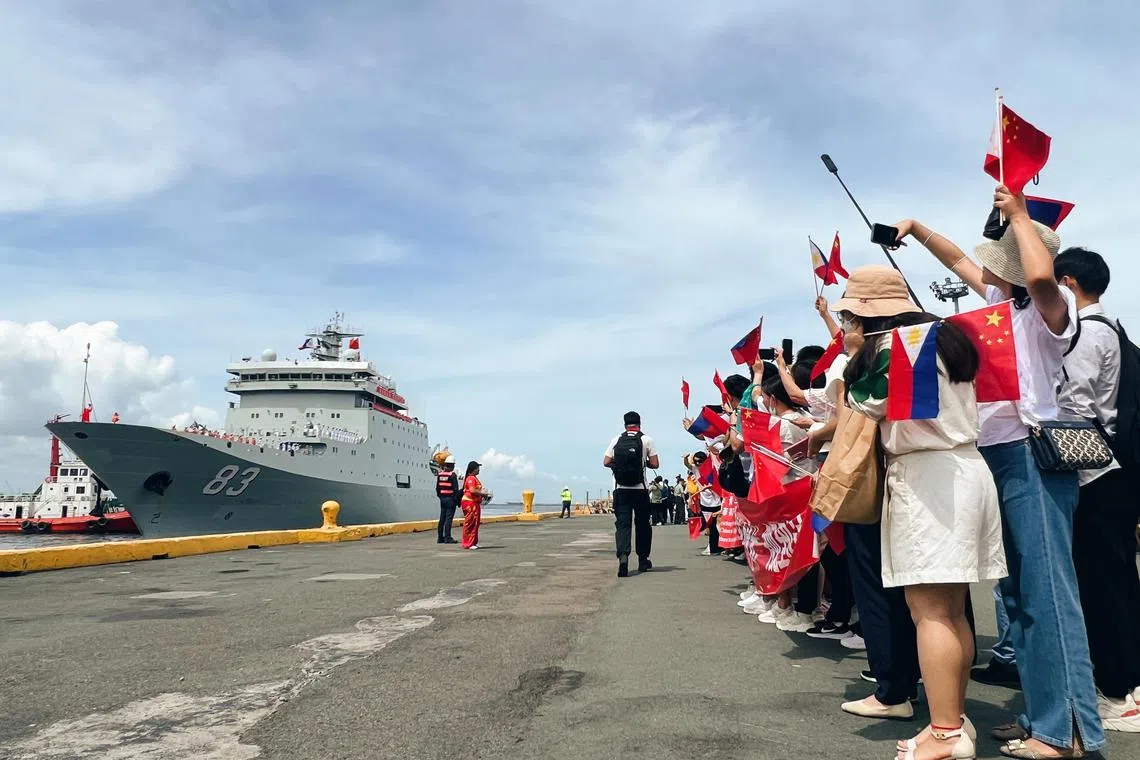
Chinese nationals and members of the Filipino-Chinese community welcoming the Chinese naval training ship Qi Jiguang on June 14.
ST PHOTO: MARA CEPEDA
Follow topic:
MANILA – China’s largest training vessel Qi Jiguang arrived at the port of the Philippine capital Manila on Wednesday for the last leg of its “goodwill” tour of South-east Asia amid simmering tensions over the South China Sea territorial dispute.
It was a festive mood at the pier as the 163m-long Qi Jiguang docked for its four-day visit to Manila, where the public will be allowed to board the ship until it departs on Saturday.
Chinese navy officers stood on deck and waved back to the Chinese nationals and Filipino-Chinese who were eagerly waiting for the ship’s arrival. The crowd gathered at the port waved their mini Philippine and Chinese flags to the beat of a lion dance troupe’s drums.
Among those present were Chinese Ambassador to the Philippines Huang Xilian and Commodore Carlo Lagasca, commander of the Philippine Navy’s (PN) littoral combat force.
A handful of PN officers were also deployed at the port, a standard protocol for welcoming foreign guests. They held small flags but stayed silent as China’s giant naval training ship dropped its anchor in Philippine waters.
Manila is the last port of call on the Qi Jiguang’s 40-day voyage that included stops in Vietnam, Thailand and Brunei. Beijing is holding the expedition in a bid to bolster relations with its South-east Asian neighbours despite their competing claims over the South China Sea.
The ship’s Manila visit also comes just a week after the coast guards of defence allies the Philippines, the United States and Japan held their first joint maritime exercise in the disputed waterway.
The last time Beijing sent its naval ships to the Philippines for a goodwill visit was in 2019, during the term of then President Rodrigo Duterte, who had turned his back on the US to seek warmer relations with China.
Mr Duterte’s successor and incumbent President Ferdinand Marcos Jr has forged a different foreign policy path by striking a delicate balancing act in fostering relations with the two rival superpowers.
For 35-year-old business administration student Yan Lin Song, a Chinese national, seeing the Qi Jiguang in Manila signals better ties between China and the Philippines.
“I think my country is now becoming stronger and stronger. Even if I am in a foreign land, I can still feel China and feel the friendship of these two countries. I’m very grateful and excited,” she said.
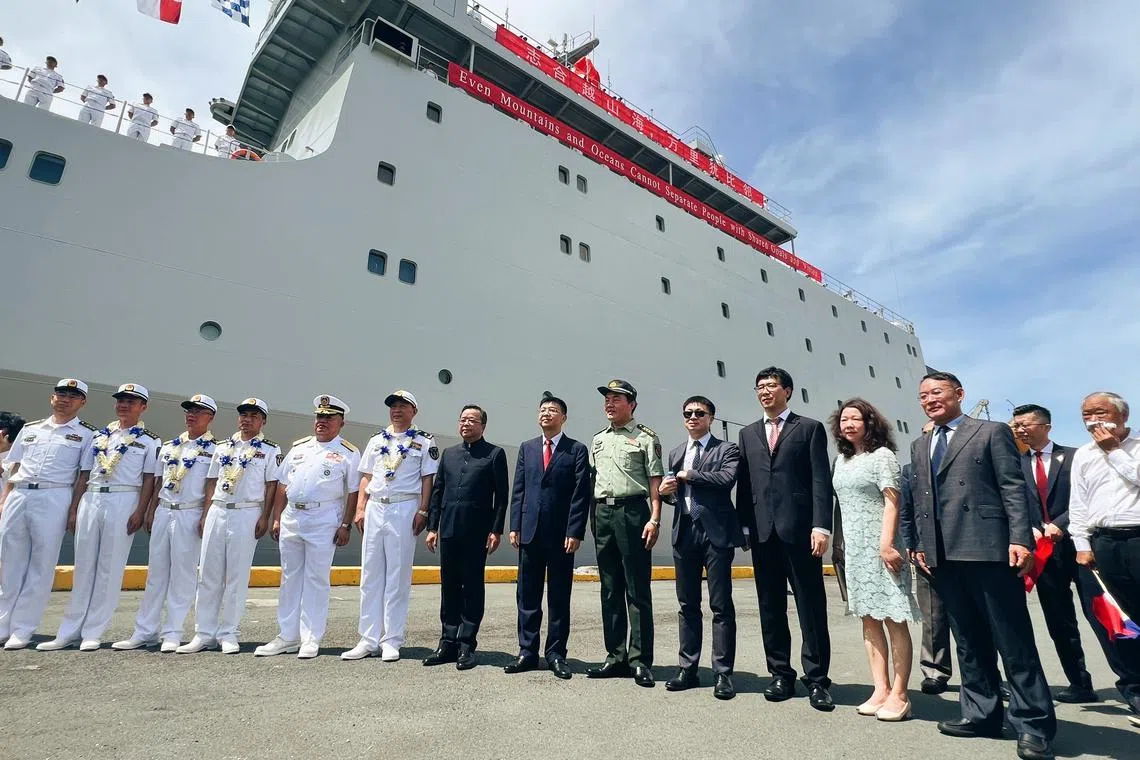
Chinese Ambassador to the Philippines Huang Xilian (seventh from left) and the Philippine Navy’s Commodore Carlo Lagasca (fifth from left) with other Chinese and Filipino officials.
ST PHOTO: MARA CEPEDA
A red banner tied on the Qi Jiguang shares a similar message, saying, “Even mountains and oceans cannot separate people with shared goals and vision”.
But the waters beyond Manila’s pier tell a different story.
An arbitral tribunal in 2016 ruled that the Philippines has sovereign rights over the eastern parts of the South China Sea that fall within the country’s 200-nautical mile exclusive economic zone.
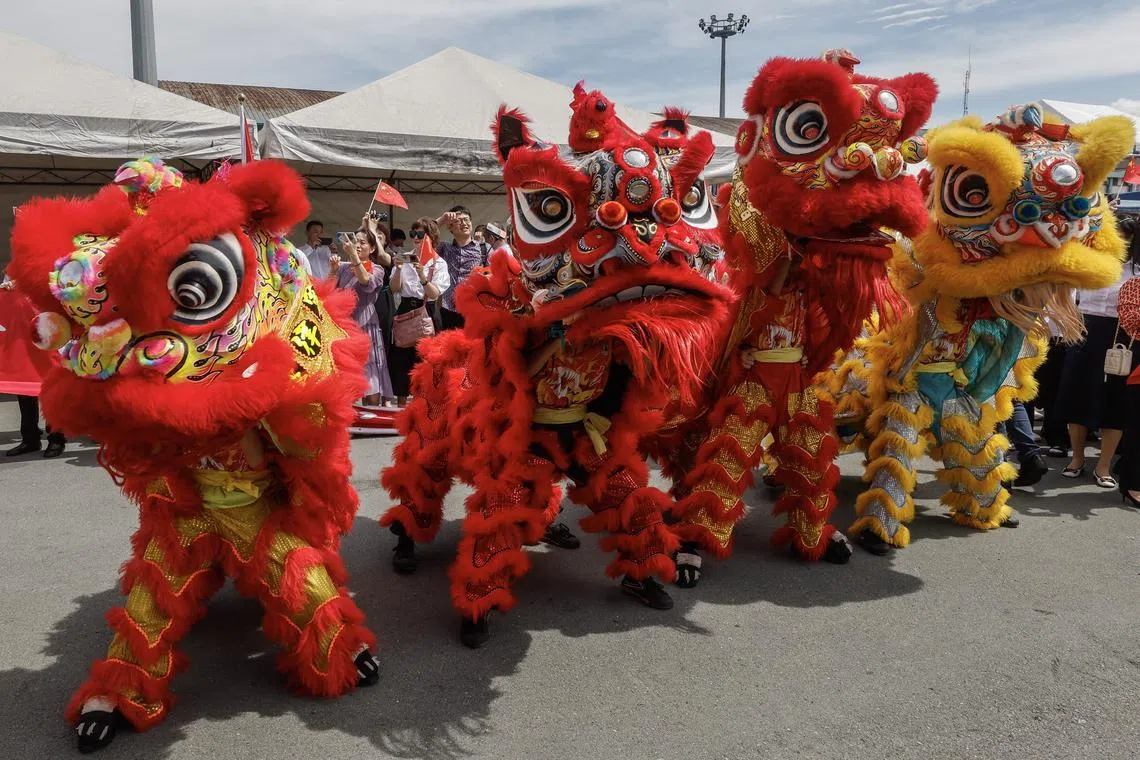
Lion dancers performing as the Chinese navy ship Qi Jiguang arrived in Manila on June 14.
PHOTO: EPA-EFE
But Beijing has refused to recognise this ruling and has instead ramped up its military and artificial island-building activities in the disputed waters.
Over the years, Chinese militia vessels have been present in parts of the South China Sea and used water cannon to drive Filipino fishermen away.
Similar water cannon, and machine guns, can be found on board the Qi Jiguang for visitors to take pictures of.
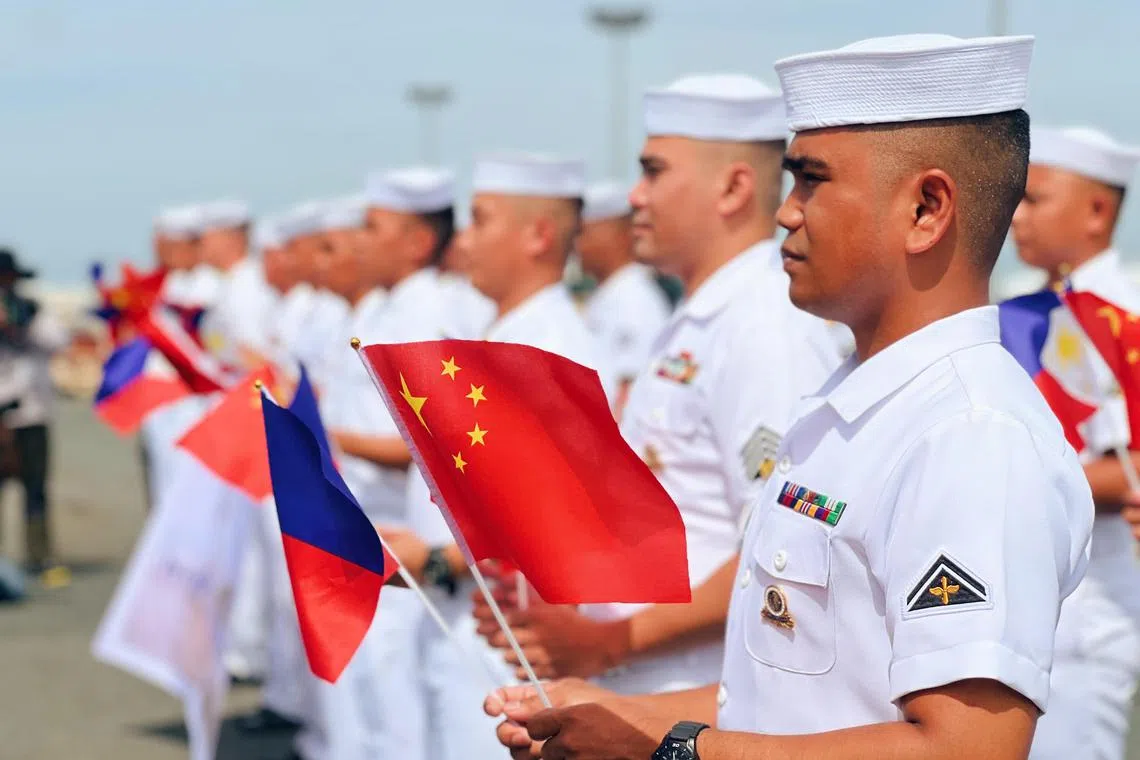
Philippine Navy officers with mini flags welcoming the arrival of the Chinese naval training vessel Qi Jiguang on June 14.
ST PHOTO: MARA CEPEDA
The Qi Jiguang’s series of port calls will not be enough to help relieve tensions in the South China Sea, according to maritime security expert Collin Koh of the S. Rajaratnam School of International Studies.
“I struggle to see how such a port call can promote any real substantial change to the situation if Beijing persists with its coercive behaviour in the South China Sea,” said Dr Koh. “At best, it gives the impression that both countries are keen to tamp down tensions when the reality is that one party is smiling at you but carrying a big stick behind.”
Geopolitical analyst Don McLain Gill of the Philippine-Middle East Studies Association also called the vessel visit merely symbolic.
“Such ship visits by China will mean very little, given that both the receiving state and the global audience are quite aware of Beijing’s inconsistent behaviour of saying one thing, but doing another,” he said.
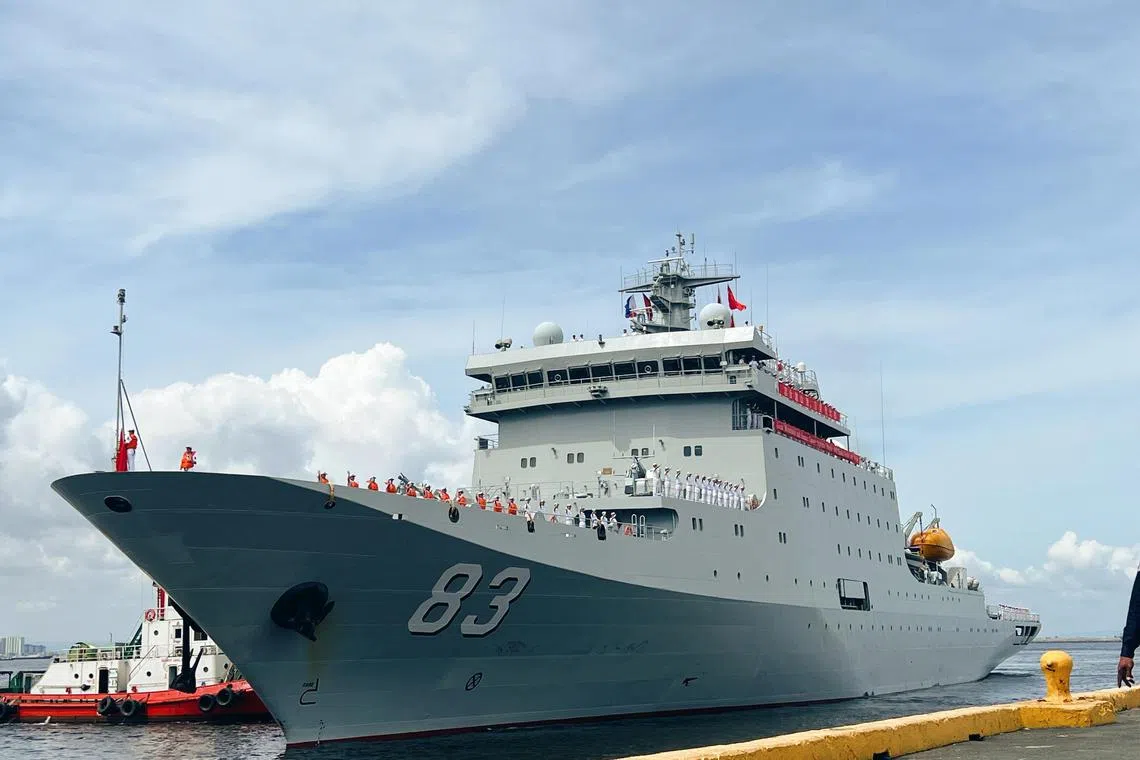
The Qi Jiguang docked in Manila, the last stop of its 40-day voyage that included stops in Vietnam, Thailand and Brunei.
ST PHOTO: MARA CEPEDA


